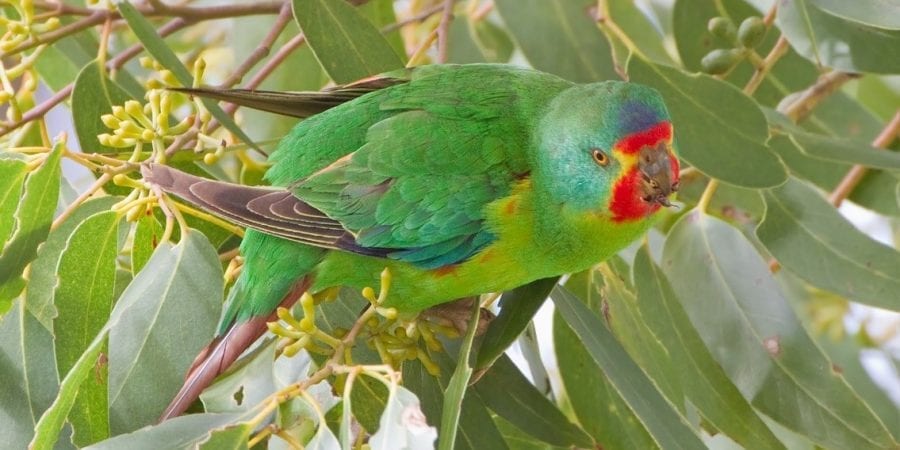Critically Endangered Swift Parrots in the Spotlight
13 November 2016
The Swift Parrot is a critically endangered bird that breeds in Tasmania, nesting in the hollows of mature or dead trees. This species migrates to mainland Australia (including NSW) in the cooler months to feed on the blossoms provided by winter-flowering trees. It is estimated that there are only 2,000 Swift Parrots left in the wild, with population loss occurring mainly due to clearing of their natural habitat throughout their range.
Earlier this year, a Swift Parrot breeding ground in Tasmania was discovered to be in the process of being illegally logged for firewood (Story link – http://www.abc.net.au/news/2016-07-29/swift-parrot-habitat-illegaly-logged-for-firewood/7672504). Illegal wood cutting is an ongoing issue in the management of this species, with conservationists urging consumers in breeding locations to ensure the wood they are purchasing is obtained from a sustainable, regulated source.
In response to the loss of this nesting habitat for the Swift Parrot, arborists from Victoria offered to carve out new hollows in trees in a way that does not cause long-term damage to the tree. A similar program has also been implemented for the Major Mitchell cockatoo with great success (Story link – http://www.abc.net.au/news/2016-08-18/arborists-volunteer-skills-to-save-swift-parrot/7764166).
Recently, the team of arborists travelled to Bruny Island in Tasmania to carve out the new hollows. For information, including a ABC 7.30 Report video (Story link – http://www.abc.net.au/news/2016-10-13/hope-new-hollows-will-save-endangered-swift-parrot/7929536)
EPS has recently been involved in targeted winter surveys for a number of projects, targeting both the Swift Parrot and the Regent Honeyeater in areas of suitable habitat. Our Director – Ecology also recently travelled to Bruny Island during the Bruny Island Bird Festival to witness first hand Swift Parrots in their breeding habitat including viewing erected nest boxes. Combined with habitat protection these measures will hopefully ensure the recovery of the species in the future and hopefully be a good news story!
For further information or assistance with biodiversity investigations for your projects please contact EPS.